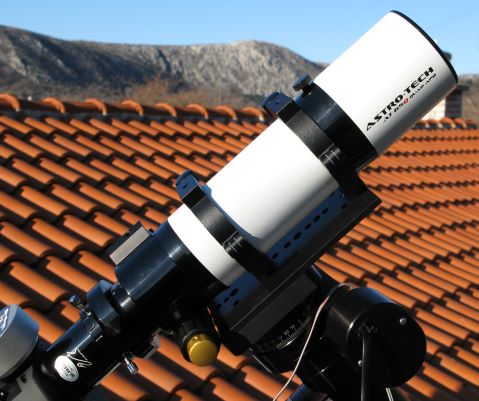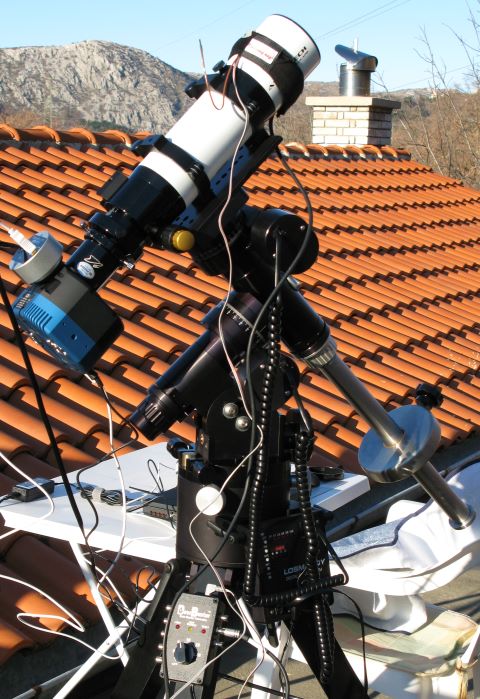
My shorter focal length instrument is Astro-Tech AT65EDQ quadruplet apochromatic refractor. Diameter of the objective lens is 65mm with focal length of 420mm giving an F6.5 system. The telescope is an astrograph, meaning that it is well suited for astroimaging because of its 44mm large corrected flat field.
At 2.8kg the telescope is quite heavy for its small size. That is due to very sturdy construction and quadruplet optical system (lots of glass). The telescope is delivered with tube rings and Vixen style dovetail, which I promptly replaced for a Losmandy dovetail.
The same telescope is sold in Europe under Teleskop Service brand as TS APO65Q.


